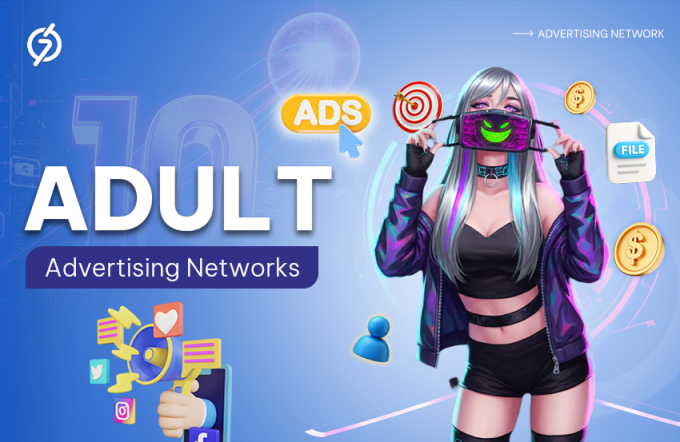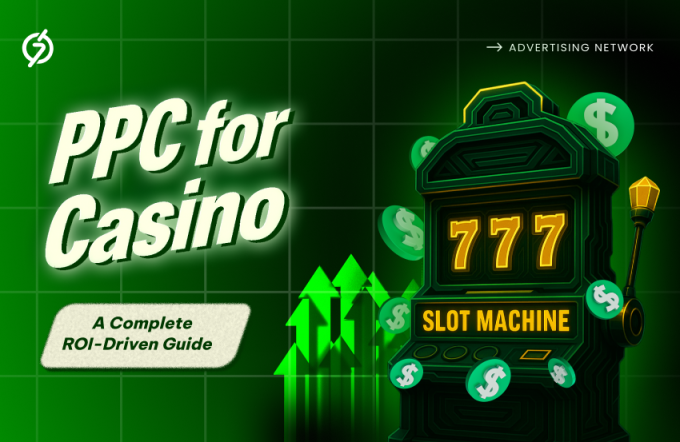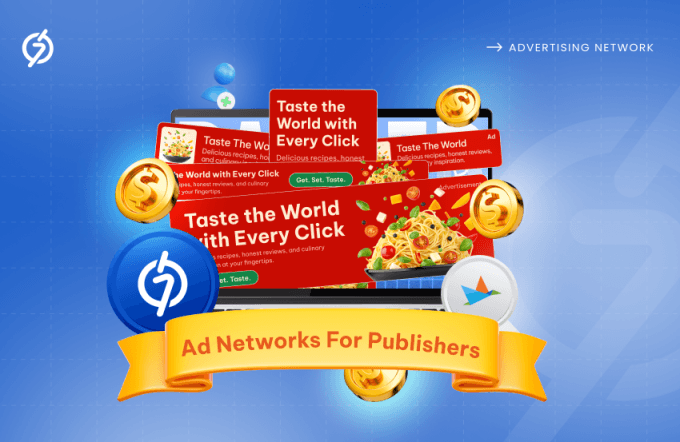Advertising and technology: have they always been two sides of the same coin?
Earlier, advertising was pretty traditional. All it meant was promoting via print media. A few years down the road, we’re seeing manual media buying and negotiations for ad spaces online.
And finally, we’re seeing the rise of ad servers, which made it possible to deliver the right ads to relevant users. As years pass and technology advances, we see new adtech trends hitting the market every year.
Now if you’re wondering why it’s important to stay up to date with adtech trends, the answer is simple. Advertisers cannot survive in this rapidly evolving field without relying on technology.
With this blog, we will cover the latest Adtech trends that every advertiser should know about. Stick till the end to see which refined techniques and sophisticated tools can give you an edge over others.
Use Ad Tech Tips to Advertise Your Business!
Advertising + Technology = Growth
AdTech, or advertising technology, involves applications and tools that advertisers use to organize, manage, and optimize the delivery of ads. It works to serve the right ads to the right audiences by automating the entire buying and selling process.
This eliminates the time spent manually negotiating deals, leaving room to engage in other tasks. You can also analyze the different campaigns’ performance and make changes accordingly.
The AdTech Ecosystem
Before we jump onto the Adtech trends, it’s important to know what ‘Adtech’ actually consists of.
From the surface, Adtech might look simple. But when you dig deeper, you’ll find that it’s a whole ecosystem of players weaved together in a network that relies on one another for it to work. There’s no one single backbone.

Advertisers, Publishers, DSPs, SSPs, Ad Networks, Ad Exchanges, and the Ad Server all contribute to creating a functioning advertising space. The whole system might crash if one stops working. Let’s go over them in brief.
Advertisers: Advertisers can either be companies, business owners, affiliates, or advertising agencies that wish to promote their products or services. They create run auctions and make bids to display their ads on publisher sites.
Publishers: Publishers are website or blog owners who want to monetize the traffic they get. They put up ad inventory available on their website for sale with the ad networks and SSPs to effectively reach advertisers who can use this space.
Demand-Side Platforms (DSPs): DSPs are platforms used by advertisers to buy ad inventory and impressions from multiple publisher websites. From a single interface, advertisers can set up ad creatives, target multiple audience groups, manage and optimize bids, and analyze campaigns.
Supply-Side Platforms (SSPs): SSPs are platforms primarily used by publishers. It allows them to set up their ad inventory for sale in hopes of monetizing it. Through SSPs, publishers can set floor prices, control bidding, and evaluate reports on how much ad inventory is being sold for.
Ad Networks: Ad networks are online platforms that connect businesses seeking to advertise their services with publishers looking to sell inventory by acting as a medium. Both advertisers and publishers can sign up with this platform to leverage multiple tools that make programmatic advertising extremely convenient.
Ad Exchanges: Ad Exchanges are open digital marketplaces where advertisers and publishers connect directly to buy and sell inventory. There’s no requirement to have an intermediary, which indirectly offers more flexibility, transparency, and better control over inventory.
Ad Server: Ad Servers form the core of the ecosystem. They are a technological system responsible for ad inventory management with ad networks and exchanges. They rely on RTB (Real-Time Bidding), AI (Artificial Intelligence), and Machine Learning to decide which ads should be placed on which websites so that they reach the right audiences.
All these mechanisms work together to promote effective vending and purchasing of ad spaces in the digital advertising space. And if you haven’t guessed by now, it’s these components that bring about new Adtech trends.
AdTech Trends You Need To Keep An Eye Out For
Adtech trends are constantly evolving and unfolding. Let’s examine the ones that are extremely popular lately.
Extension of Programmatic Advertising
Programmatic advertising is already at the forefront of Adtech, so what makes this a trend? Despite the fact that the automation of buying and selling ads has reached an all-time high, ad networks and exchanges are constantly striving to polish it further. For effective advertising, a programmatic system is not just a choice but a necessity.
A report by Statista mentions that global programmatic ad spending reached an estimated US $595 billion in 2024 alone. It is further expected to hit a dramatic milestone of $800 billion in 2028. These statistics are a clear indication of how significantly programmatic advertising is going to expand.
As technology advances and paves the way for newer automation and better algorithms, the way programmatic advertising is navigated will also change.
Embracing AI
The Adtech ecosystem was never shy of adopting Artificial Intelligence. Over the last few years, AdTech companies have wholeheartedly invested in the various components of AI. Here are all the ad tech trends you can expect as the industry embraces AI.
- Hyperpersonalization of ads by simplifying complex data and providing deeper insights into key audiences.
- Predictive analysis to forecast churn, customer segmentation, winning ad formats, and optimal bids.
- Real-time automation to engage with customers instantly and act on breaking news and updates.
- Automating the content creation and optimization process with appropriate prompts.
- Easy communication flow set-up that targets audiences on multiple channels at different touchpoints.
It is no secret that Generative AI is the future. Adopting initiatives by AI tools and programs will not only be essential to staying in the competition but also profitable in the long run.
Interactive Ads > Static Ads
Static vs. interactive ads won’t even be a topic of debate in the coming years. With an overload of ads and banner blindness at an all-time high, there’s little scope for advertisers to capture attention with static ads. This opens up a bright future for interactive ads.
Interactive ads are highly interactive forms of advertising that invite users to engage with them actively. Statistically speaking, interactive content sees 52.6% more engagement, with buyers spending 13 minutes with it, as per data collected by MediaFly.
Here’s how it sneaks its way into Adtech trends.
- Gamified ads that involve elements like quizzes, puzzles, or trial games.
- Playable ads that allow users to try out products before buying them.
What makes interactive ads special is that they turn a simple piece of promotional content into an activity. Potential customers are ten times more likely to make a purchase when they feel included in your digital advertising stunts.
In-Game Advertising
Now don’t get mixed up here— in-game ads are a bit different from interactive ads. In contrast to interactive ads, in-game ads are placed within a video game itself.
Imagine you’re playing a car racing game set in a virtual city, complete with roads, sidewalks, buildings, and streetlights, just like a real city has. As you explore the area and take random turns, something catches your eye: an ordinary billboard attached to a building. What isn’t so ordinary about it is that it features an advertisement for the famous candy brand M&M’s, which reads, “M&M’s for Fun and Games.”
What a great way to connect with young audiences, isn’t it?
In-game advertising is one of the top-notch adtech trends that is slowly being recognized. Brands that cater to young and gaming audiences are now meeting them where they actually are. As justified by Statista, this strategy demonstrates a CAGR of 9.10% from 2024-2029, which leads up to a projected market volume of US $169.40 billion by 2029.
Video Advertising
Videos are not new to advertising, but their graph shows a rapidly increasing trend in the past few years. From 15-second video commercials on TV to minutes-long video ad films on YouTube, brands have come a long way.
According to a report published by Statista, digital video ad spending is estimated to be $176.63 billion worldwide. This increased spending comes from high video consumption rates. Advertisers have figured out that consumers are more inclined to watch a video ad than spend time looking at another banner.
This adtech trend is expected to grow even more in the coming years, with a significant focus on:
- Short-form video content that tells the story about your product in a quick few seconds
- Quick cuts to hold the attention of the viewers
- Storytelling backed with proper narration and visuals
- User-generated content compiled into video formats
Another thing that comes into consideration is the expansion of platforms like TikTok, YouTube, and Instagram. As they gain momentum in the number of users consuming video content on these platforms, usage of video ads will also rise.
Immersive AR and VR Tech
In the near future, ads and promotions will no longer be a passive experience for users. They will place you at the center of the story, making you feel like the main character and provide a personalized view of what using their service would be like. This will hail from the development of Augmented and Virtual Reality.
Understanding them is simple. AR works by enhancing the world around you through your screens. For instance, marketers are placing QR codes in posters and advertisements, which when scanned, directs the user to a website that complements what is shown on the screen.
Virtual Reality, on the other hand, is less about advertising and more about marketing as a whole. It transports you into a whole different world. In a recent campaign launched by Etsy, they debuted a virtual home that allows users to ‘walk through’ a virtual house curated with the latest Etsy items.
AR and VR are taking shape slowly and gradually, making them unskippable Adtech trends.
Big Screen and CTV Advertising
TV advertising is making a comeback, but it’s a little different this time.CTV advertising is concerned with video advertising on big screens and TVs connected to the Internet. With the rise of streaming platforms like Netflix, Hulu, Prime and more, the scope of reaching a wider audience through them has increased. This type of advertising can be further expanded to set-top boxes and gaming console.
A report by Statista states that in 2024, CTV ad spending in the United States is expected to surpass $30 billion, marking a dramatic increase of 17% from the previous year. By the statistics alone, you can tell that it is becoming a popular Adtech trend.
By promoting your business via CTV advertising, you can widen your reach to a variety of demographics, locations, device levels, and households. As streaming platforms grow, CTV advertising is sure to follow.
Growth of Audio Advertising
Audio advertising has been one of the most popular Adtech trends for a while. The number of people listening to podcasts, audiobooks, music streaming platforms, and online radio stations has expanded greatly. Advertisers now have the opportunity to tap into audio platforms and reach audiences there, which actually is a lot.
Audio advertising comes with many benefits. First, it is more cost-effective than video ads. Second, you can catch a very narrow audience by advertising with podcasts within that niche. Moreover, people are more likely to listen to audio ads than other ad formats.
In the coming future, brands are aiming to expand to interactive audio ads that may allow customers to reply to call-to-actions. Users can ask for an item to be added to cart, request more info via email, set a reminder, or make a hands-free purchase.
Customer Data Platforms
Customer Data Platforms are software that collects data from multiple places to create a centralized customer database. This includes insights from how customers behave and engage with different types of content at various touchpoints.
The use of customer data platforms has been taking up with the rise of personalization in advertising. Advertisers turn to these customer data platforms to make ad campaigns that make their audience feel seen and understood. Moreover, it can also help with audience segmentation and in measuring the impact of each campaign’s performance.
The Final Word
Coming back to our initial question if advertising an technology are two sides of the same coin- the answer is yes. As we just saw, tech is extremely deeply integrated into advertising. In the future, it’s only going to increase, and marketers will have to adapt to it.
Now that we know what Adtech trends are going to prevail in the coming years, it’s time to alter your advertising strategies accordingly. With continuous advancements and emerges of the latest technology, the future of Adtech is filled with opportunities. And only brands and advertisers who grasp these trends within time will survive in the market.
Frequently Asked Questions (FAQs)
What is Adtech?
Ans. Adtech is the amalgamation of technology in the advertising sector. This essentially involves applications and tools that advertisers use to create, manage, optimize their campaigns and control the media buy process. It’s a whole ecosystem of ad networks, exchanges, DSPs, SSPs, advertisers, and publishers.
Why do Adtech trends keep emerging every year?
Ans. Technology and advertising are both sectors that constantly evolve and change in the blink of an eye. Changing market conditions always call for new mechanisms that can effectively adapt to it.
How can I benefit from Adtech trends?
Ans. Adtech trends are an extension and solution of what’s currently prevailing in the market. Incorporating them into your strategy gives you a closer look at what will work to drive conversions. It will help you create ads that audiences will react to.
Who should care about Adtech trends?
Ans. All brands, advertisers, advertising agencies, ad networks, exchanges, and even publishers should pay special attention to the Adtech trends to keep an edge in the market.
How can I incorporate Adtech trends in my advertising strategy?
Ans. You can start incorporating Adtech trends in your advertising strategies by experimenting first. Look at the trends and see which ones will suit your audience the best. Try them out and check the performance before committing to anything for a long time.

















